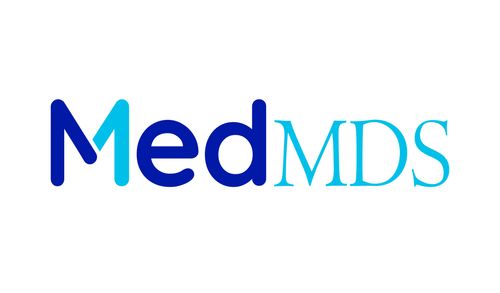Hello everyone, here I am introducing my blog on Optimal Heart Health: The Cardiovascular Benefits of Physical Activity. Regular physical activity not only enhances your physical fitness but also promotes a strong and healthy heart. Let’s delve into the remarkable benefits of exercise for a vibrant and gratifying life. Get ready to feel motivated and empowered to prioritize your heart health!
Introduction – Healthy Heart, Healthy Life: The Cardiovascular Benefits of Exercise
Maintaining good heart health is critical to overall health. One of the most effective methods to achieve this is through regular physical activity. Physical activity has numerous cardiovascular advantages, including decreasing the likelihood of heart disease, stroke, and high blood pressure. It also aids in improving heart function, enhancing blood circulation, and reducing cholesterol levels.
The advantages of physical activity on the heart are plentiful and can be attained through a range of activities, such as aerobic exercises, resistance training, and flexibility exercises. Incorporating physical activity into your daily routine may pose a challenge, but it is vital to start with small steps and gradually increase the intensity and duration of your workouts.
With dedication and commitment, you can enjoy a fulfilling life with a healthy heart. So, begin today and prioritize physical activity in your life. Your heart will express gratitude for it!
The Benefits of Exercise on the Heart
Regular physical activity provides numerous advantages for the heart and cardiovascular system. Here are some of the main benefits of exercise on the heart:
Strengthening the cardiac muscle
Exercise aids in fortifying the cardiac muscle, making it more efficient at pumping blood throughout the body. This can result in a decreased resting heart rate and increased cardiac output.
Improved blood circulation
Exercise boosts blood flow throughout the body, including the coronary arteries that supply oxygen-rich blood to the heart. This enhanced circulation helps deliver nutrients and oxygen more effectively to the heart, diminishing the risk of heart disease.
Decreasing blood pressure
Engaging in regular exercise can help lower blood pressure levels. Elevated blood pressure strains the heart and amplifies the risk of heart disease, so reducing blood pressure through exercise is advantageous for heart health.
Lowering cholesterol levels
Exercise has been proven to increase “good” cholesterol (high-density lipoprotein or HDL) and decrease “bad” cholesterol (low-density lipoprotein or LDL). This equilibrium helps prevent the accumulation of plaque in the arteries, reducing the risk of heart disease.
Managing weight
Exercise plays a vital role in weight management, as it aids in burning calories and boosting metabolism. Maintaining a healthy weight is crucial for heart health, as obesity is a risk factor for various cardiovascular conditions.
Controlling diabetes
Regular physical activity can help regulate blood sugar levels and improve insulin sensitivity, reducing the risk of developing type 2 diabetes. Diabetes is a major threat factor for cardiovascular disease.
Alleviating stress
Exercise has potent stress-reducing effects. High-stress levels can contribute to heart disease by increasing blood pressure and heart rate. Engaging in physical activity helps manage stress, promoting overall heart health.
Improving overall cardiovascular health
Regular exercise has been linked to a decreased risk of coronary artery disease, heart attacks, and strokes. It also plays a role in preventing other cardiovascular conditions such as heart failure and arrhythmias.
It is important to note that before commencing any exercise program, it is advisable to consult with a healthcare professional, especially if you have any underlying health conditions or concerns about your heart health.
How Exercise Improves Cardiovascular Health
Physical activity enhances cardiovascular health in various ways:
Fortifying the cardiac muscle
Exercise, notably aerobic activities like jogging, swimming, or biking, aids in fortifying the heart muscle. Consistent physical activity prompts the heart to work harder, thereby strengthening its capacity to efficiently pump blood throughout the body.
Enhancing blood circulation
Exercise stimulates the expansion and development of blood vessels, allowing for improved blood flow. This encompasses the coronary arteries that supply the heart muscle with oxygenated blood. Enhanced blood circulation ensures that the heart receives an ample supply of oxygen and nutrients, reducing the risk of cardiovascular diseases.
Decreasing blood pressure
Regular exercise can assist in reducing both systolic and diastolic blood pressure. It enhances the flexibility of blood vessels, encourages the release of nitric oxide, and diminishes peripheral resistance, all of which contribute to lowering blood pressure. By maintaining healthy blood pressure levels, the risk of heart disease and stroke diminishes.
Increasing levels of “good” cholesterol
Exercise aids in elevating high-density lipoprotein (HDL) cholesterol, often referred to as “good” cholesterol. HDL cholesterol transports surplus cholesterol from blood vessels back to the liver, where it undergoes processing and elimination from the body. This can help prevent the accumulation of plaque in the arteries, reducing the risk of heart disease.
Decreasing levels of “bad” cholesterol
Regular physical activity also assists in lowering low-density lipoprotein (LDL) cholesterol, often known as “bad” cholesterol. Elevated levels of LDL cholesterol can lead to the formation of plaque in the arteries, impeding blood flow to the heart. By reducing LDL cholesterol, exercise helps maintain healthy arteries and diminishes the risk of heart disease.
Managing weight
Engaging in consistent exercise plays a vital role in weight management and preventing obesity. Being overweight or obese increases the risk of developing various cardiovascular conditions, including heart disease, high blood pressure, and diabetes. Exercise aids in burning calories, boosting metabolism, and sustaining a healthy weight, thereby contributing to overall cardiovascular health.
Enhancing cardiac and pulmonary efficiency
Regular exercise enhances the efficiency of the cardiovascular system by increasing the heart’s ability to pump blood and improving lung function. With consistent physical activity, the heart becomes more efficient at delivering oxygen to the muscles, reducing strain and enhancing overall cardiovascular health.
Alleviating inflammation
Physical activity has anti-inflammatory impacts on the body. Persistent inflammation is linked to a heightened likelihood of cardiovascular disease. By alleviating inflammation, exercise safeguards the cardiovascular system and decreases the likelihood of encountering heart-related problems.
To obtain these advantages, it is crucial to partake in consistent physical activity and embrace a well-rounded, overall healthy way of life. It is also imperative to consult with a healthcare specialist before initiating any fresh exercise regimen, particularly if you have preexisting cardiovascular conditions or worries.
Different Exercises That Benefit the Heart

There are multiple kinds of exercises that can be advantageous for the heart. Here are a few illustrations:
Cardiovascular exercises
Also referred to as aerobic exercises, cardiovascular activities get your heart pumping and increase your respiration rate. These exercises aid in improving cardiovascular well-being and encompass activities such as brisk walking, jogging, running, cycling, swimming, dancing, and aerobic classes.
Resistance training
While primarily recognized for building muscle strength, resistance training exercises can also be beneficial for the heart. Strength training, such as weightlifting or utilizing resistance bands, helps enhance overall muscle tone and can contribute to improved heart health.
High-intensity interval training (HIIT)
HIIT entails brief bursts of vigorous exercise followed by short recovery periods. This form of exercise rapidly elevates your heart rate and challenges your cardiovascular system. HIIT workouts can be adapted to various exercises, such as sprints, jump rope, or circuit training.
Endurance exercises
Endurance exercises, also known as stamina training, are activities that aim to enhance your endurance and increase your capacity to sustain physical activity for an extended period. Examples include long-distance running, cycling, swimming, or participating in marathons.
Sports activities
Engaging in sports activities such as basketball, soccer, tennis, or racquetball can provide significant cardiovascular benefits. These activities often involve bursts of intense movements and require good cardiovascular endurance.
Low-impact exercises
Low-impact exercises are gentle on the joints and suitable for individuals with specific health conditions or those who prefer less intense workouts. Examples include walking, elliptical training, stationary biking, and water aerobics.
It’s crucial to select exercises that you find enjoyable and that are appropriate for your fitness level and overall health. It’s also advisable to incorporate a combination of aerobic exercises, resistance training, and flexibility exercises into your routine to reap overall cardiovascular health benefits. Remember to consult with a healthcare professional or a certified fitness trainer before commencing any new exercise program, especially if you have pre-existing heart conditions or concerns.
Exercise Tips to Include in Your Daily Routine
Incorporating physical activity into your daily schedule can be difficult, but with some careful planning and commitment, it is attainable. Here are some suggestions to assist you in making exercise a regular part of your day:
Establish achievable goals
Begin by setting realistic and attainable exercise objectives. Take into account your current level of fitness, schedule, and any restrictions or health considerations. Gradually intensify and lengthen your workouts over time.
Plan it
Treat exercise as if it were an important appointment by scheduling it into your daily routine. Select a time that suits you best, whether it’s in the morning, during lunch breaks, or in the evening. Consistency is crucial.
Discover activities you enjoy
Engage in activities that you find enjoyable and that align with your interests. This will make it easier to keep to your training routine. Experiment with different types of exercises until you find what you enjoy, such as jogging, dancing, swimming, or playing a sport.
Cultivate a habit
Commit to making exercise a habit. With time, it will become more natural and ingrained in your routine. Begin with small steps and progressively increase the frequency and duration of your workouts.
Incorporate movement throughout the day
Look for opportunities to be more active throughout the day. Always go for the stairs instead of the elevator, walk or cycle rather than drive short distances, or take brief breaks during work to stretch or perform a quick exercise routine.
Make it a social activity
Exercise with a friend, join a group fitness class or participate in team sports. Accountability and social support can help keep you motivated and make exercise more enjoyable.
Utilize technology
Take advantage of fitness apps, fitness trackers, or online workout videos to assist and monitor your progress. These tools can provide structure, motivation, and variety to your workouts. Read our blog on Chest X-ray diagnosis with AI.
Remain flexible
If you miss a workout or have a busy day, don’t be discouraged. Adapt and find alternative ways to incorporate physical activity into your routine, even if it’s just a shorter or lighter workout.
Reward yourself
Celebrate your achievements and reward yourself for sticking to your exercise routine. Treat yourself to something you enjoy, whether it’s new workout gear, a massage, or a guilt-free indulgence.
Keep in mind, that it is crucial to pay attention to your body, begin at a moderate pace, and progressively enhance the level and length of your exercise sessions. If you have any preexisting health issues, it is advisable to seek guidance from a medical expert before commencing any fresh fitness regimen.
Conclusion – Start Today to Enjoy a Healthy Life with a Healthy Heart
In conclusion, it is evident that physical activity plays a crucial role in maintaining a robust cardiovascular system and overall heart health. Through regular exercise, individuals can significantly decrease their chances of developing heart-related ailments like heart attacks, strokes, and hypertension. Whether it be jogging or swimming, there are various forms of physical activities that can positively impact the heart and enhance overall well-being.
However, it is crucial to gradually and consistently incorporate exercise into one’s daily routine, rather than attempting drastic changes overnight. By commencing today and consciously prioritizing physical activity, individuals can lead a healthier life with a strong heart. Remember, it is never too late to start, and every small stride contributes to achieving a healthier lifestyle. So, let us take charge of our well-being and commence the journey towards a healthier, more content life!




